(Mt. Rainier from Highway 410 near the Sunrise turnoff)
Much like my last article on hiking in Washington – #4, Crystal Lakes Trail – Naches Peak is another of those easily accessible, sometimes overcrowded but absolute must-do hikes in the general vicinity of Mt. Rainier National Park (MRNP).
Getting there is easy enough on Highway 410 around the east side of MRNP. Go past the entrance road to Sunrise and continue up to Chinook Pass, doing your best not to plunge off the curvy, no-shoulder, sheer dropoff highway to a horrible death as you ogle the stunning views of Mt. Rainier. Better to just pull off the road at one of the wide spots, get out and take your photos along with every one else, then jump back in your car, put on your blinders and head up the last few miles to Chinook Pass.
(View from Highway 410 almost to top of Chinook Pass – keep your eyes on the road, if you can)
Chinook Pass is a destination worth traveling to in itself. At 5,400 feet in elevation it is traditionally the last of Washington’s high mountain passes to reopen in the spring. This year it was almost ready for traffic in the middle of May when another round of late spring snow delayed the opening until Memorial Day weekend. Usually by some time in October it will be snowed under and closed again until the following spring. Sometimes it seems a little crazy to spend so much time, manpower and effort to maintain a highway which is only in use four months of the year.
(East side of Chinook Pass, Naches Peak on the left)
For folks in other areas of the country such as Colorado where they have passes in the 10,000 foot range, 5,400 feet might not sound all that high for a pass to be closed down all winter. But that doesn’t take into account the prodigious amount of snowfall which typically accumulates in the MRNP vicinity. An average winter in this area will dump anywhere from twenty to thirty feet of snow on the ground. This past winter, 2013-14, the total was about 25 feet. The cost to benefit ratio of keeping a small two-lane state road like 410 open all winter is simply prohibitive, especially with a major freeway, I-90, only about 60 miles to the north carrying the bulk of east-west traffic across the state.
(Mt. Rainier and Lake Tipsoo in June)
(Mt. Rainier and Lake Tipsoo in August)
(Mt. Rainier and Lake Tipsoo in November)
So, you’ve made the drive to Chinook Pass. Leave your car in the lower parking area where it’s still free to park, walk the short distance out to Lake Tipsoo and meander along the many paths around the lake. When you’ve had enough of that, take the trail on the north end of the lake where it branches off and heads uphill into the trees. Soon you will come to a wooden foot bridge which carries you over highway 410 right at the apex of the pass. Continue straight ahead and you are now on the Naches Peak Loop trail. This is also a section of the Pacific Crest Trail.
(Hiking around Lake Tipsoo in November fog)
(Bird on the ice – cold feet?)
(Don’t jump!)
You could, of course, start the trail just across the street from where you parked in the lower parking area, but that way takes you counterclockwise and the best views of Rainier will be behind you as you walk.
(View to the east of Highway 410 descending toward eastern Washington)
One word of caution. Don’t even think of hiking this trail until July. We’ve come up here more than once in mid to late June and always found the trail still buried under anywhere from one to several feet of snow. It’s a short hiking season at this elevation, basically July, August, and September, with maybe part of October if you’re lucky.
(Watch your step. Still lots of snow on the trail in June)
One of the best things about the Naches Peak Loop is it’s just about the best there is in terms of bang for your buck. By this I mean getting a maximum amount of jaw-dropping mountain vistas for the minimum amount of effort. This is not to say it’s super easy, but neither is it a terribly strenuous hike. Nearly anyone, from six-year-olds to doddering seniors, can make the trek. I know because I’ve seen them all out there, sometimes wheezing, sometimes whining but they all seem to make the three and a half miles without too much problem.
(Wildflowers!)
(Along the Naches Peak Loop Trail)
(Lupine central)
The absolute best time to come is approximately mid-July to mid-August, especially if you are a mountain wildflower freak. The first mile or so of the trail ascending the eastern slopes is absolutely carpeted in a cornucopia of lupine, beargrass, Indian paint brush, mountain daisies, avalanche lilies, and many more. Another bonus if you come a little later in the season, say late August and September, is the abundance of wild mountain blueberries free for the picking right on the trailside. Stop and have a snack. They’re small and not really much at all like a domestic blueberry, but incredibly tasty nonetheless.
When you’ve reached the approximate halfway point of the trail there will be a spectacular view of Dewey Lakes, two sparkling alpine jewels a mile or so away, though they look farther. A short distance ahead is a trail forking off and descending to Dewey Lakes. It makes a great side trip but it’s about 700 feet down and a relentless uphill slog coming back up.
(Dewey Lakes in the distance)
(The larger of the twin Dewey Lakes)
(Indian paint brush)
Whether you take the side trip to Dewey Lakes or not, the Naches trail continues at a moderate incline. Then you round an outcropping of rocks on your right and there it is right smack in your face – Mt. Rainier, snowcapped like a giant mound of vanilla ice cream dumped on the horizon for the gods to feast on. We mere mortals can only stand in awe with mouths agape, snap our cameras and never tire of that marvelous pile of glaciated rock.
(Rainier and wildflower meadow)
This is an incomparable spot to sit a while and have a drink, eat your lunch, massage your feet or simply relax and soak in the view. The meadow immediately ahead is lush with purple lupine and with Mt. Rainier as backdrop it’s almost impossible to take a bad picture.
(Still more wildflowers. You should definitely come here in July)
Moving on across the meadow, the trail gently undulates up and down for the next half mile or so. More blueberries beckon you to eat them. Soon the trail is on a continual downward slope with Rainier still dominating the view ahead of you. Off to your left – south by compass direction – the views are equally majestic. Take a moment to to be still, listen to the silence and you might be favored with the sight of eagles spiraling through the canyons and riding the updrafts and thermals.
From this point to trail’s end is perhaps another mile or a bit less, a nice trek through the trees but here the Rainier views are gone, swallowed up by giant Douglas Firs. As you near the highway and traffic noise rolls up to you from below, you might be tempted to turn around and head back to where you just were. If you have the energy, no one would blame you if you did.
(A carpet of lupines)
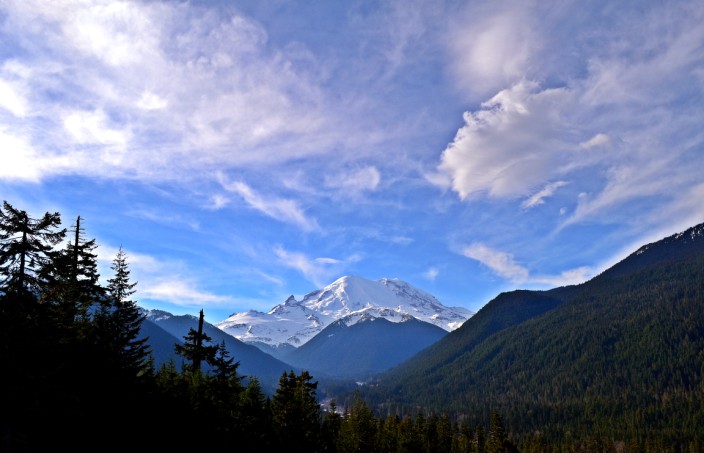
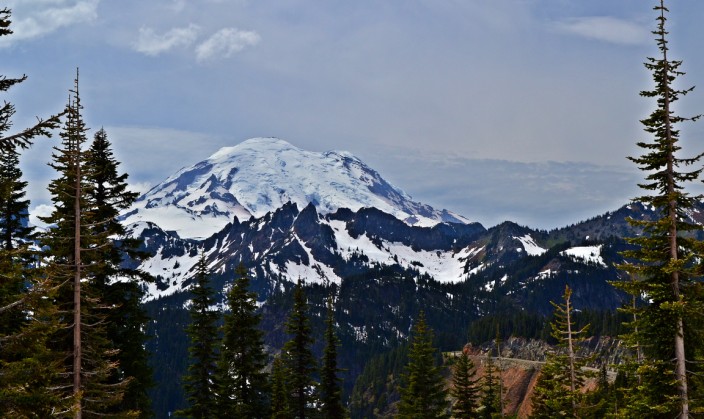
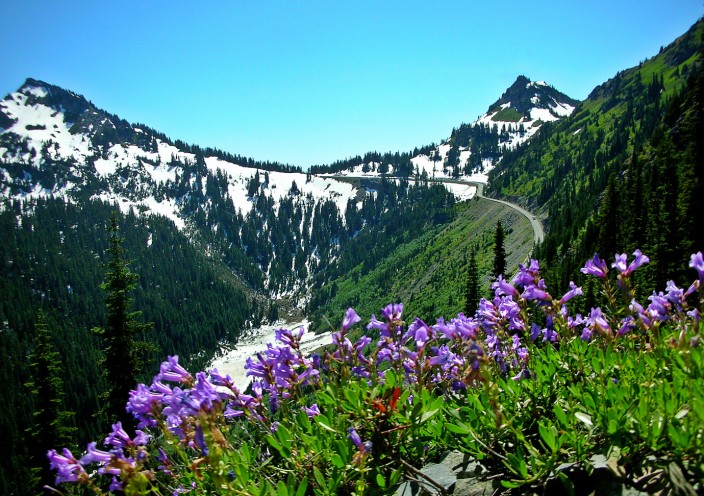
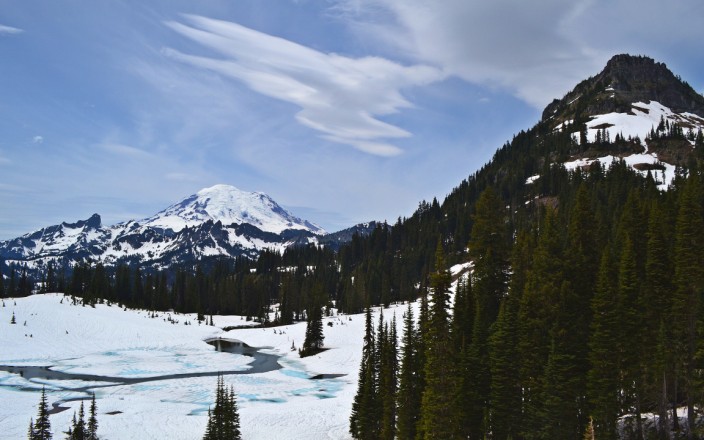
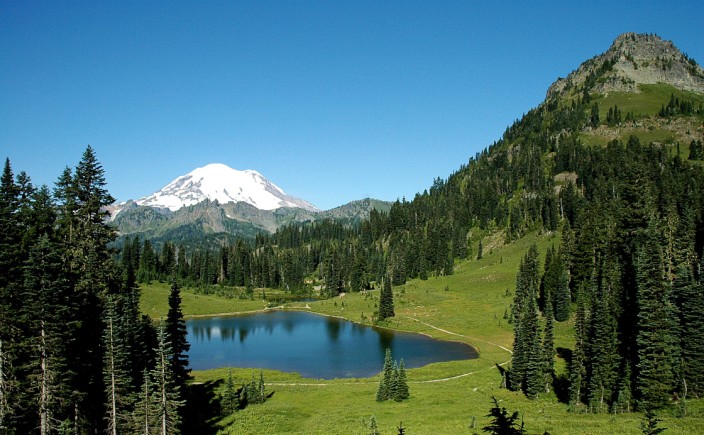
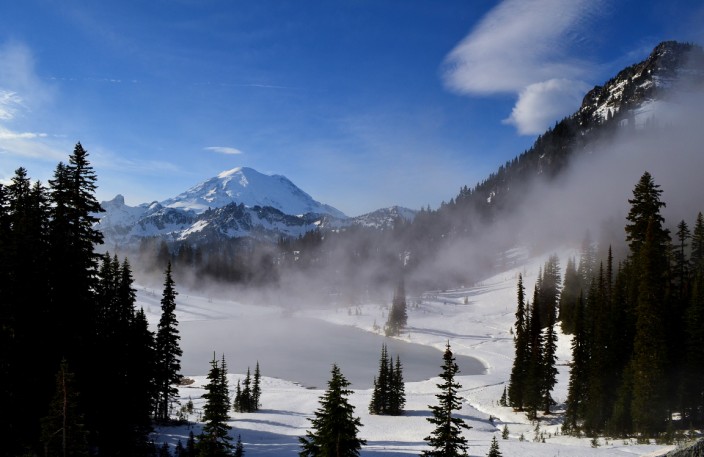
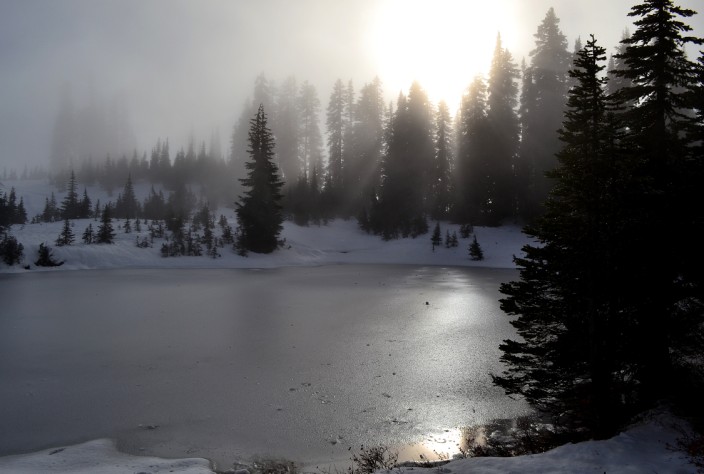
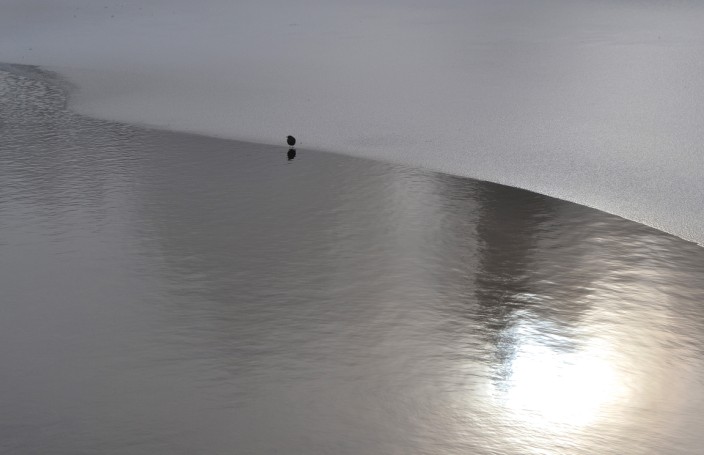
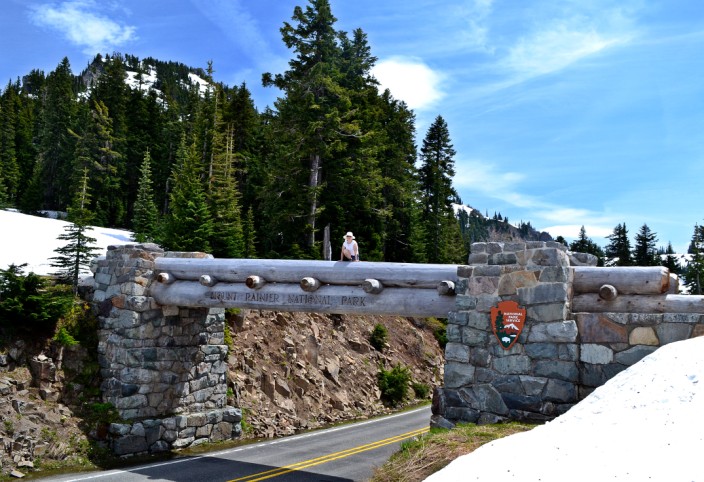
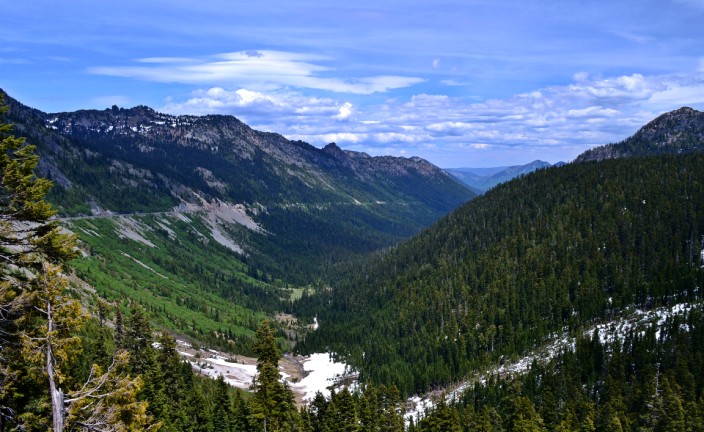
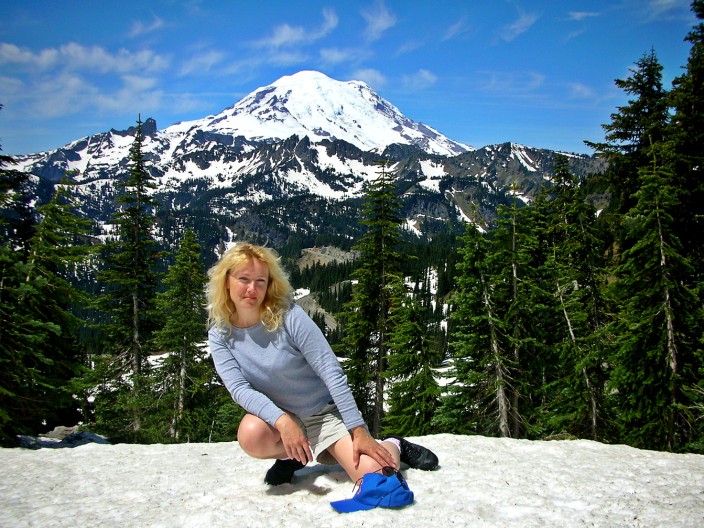
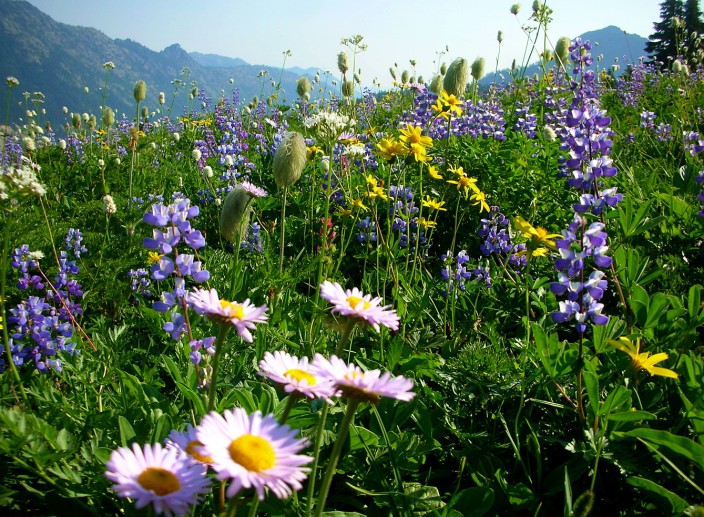
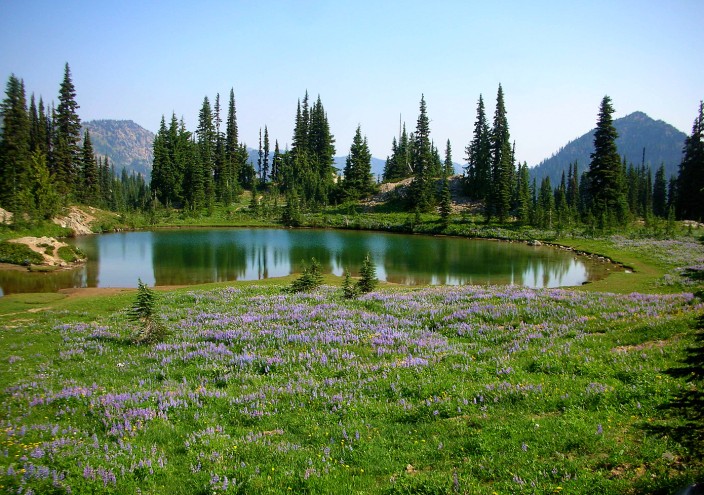
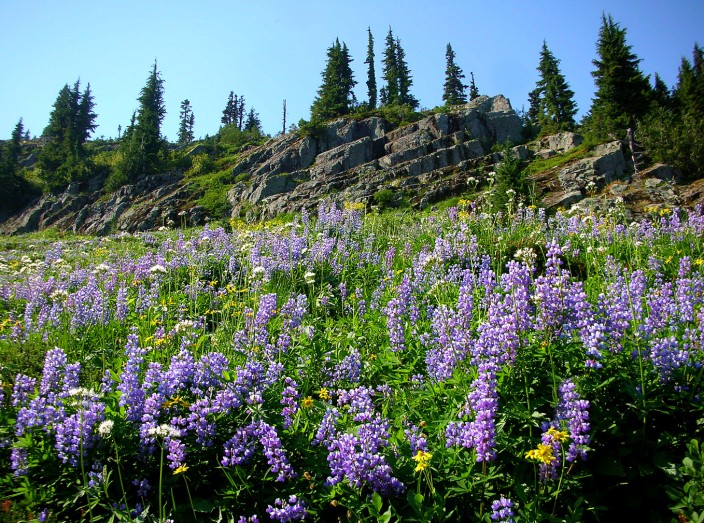
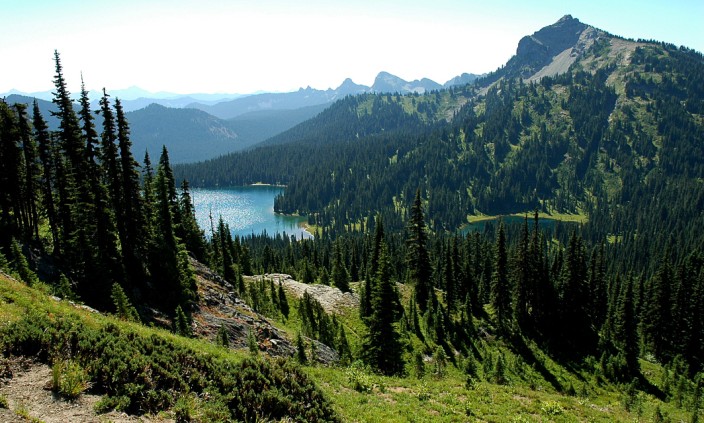
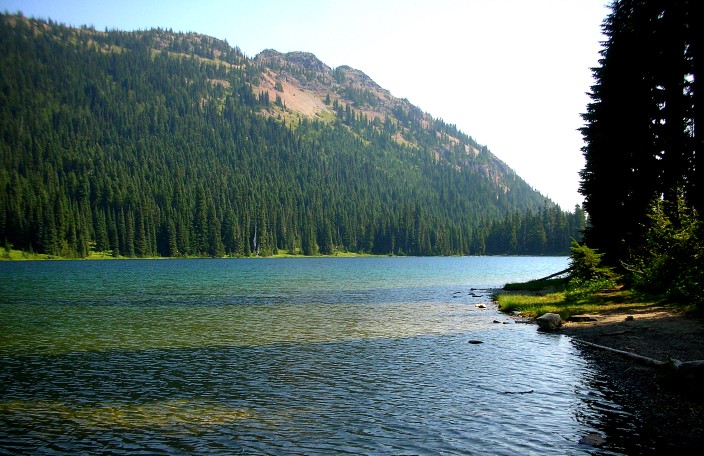
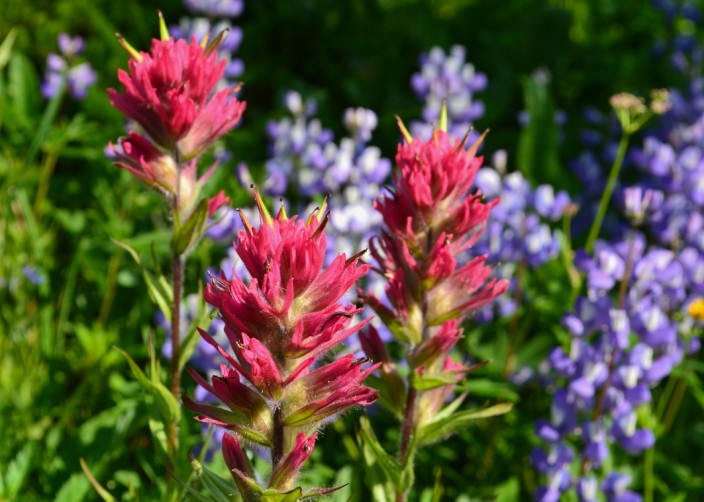
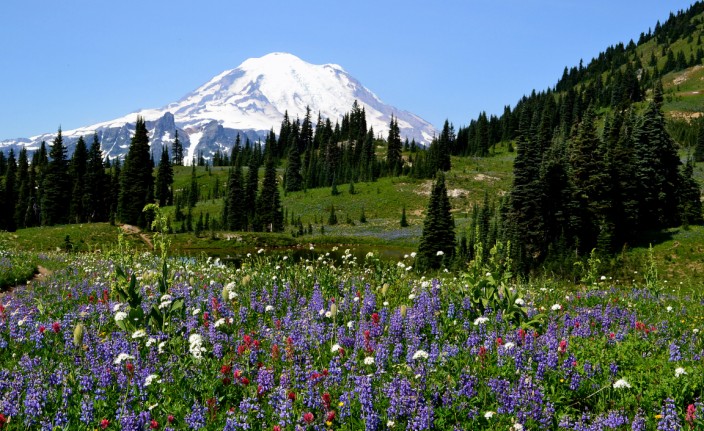
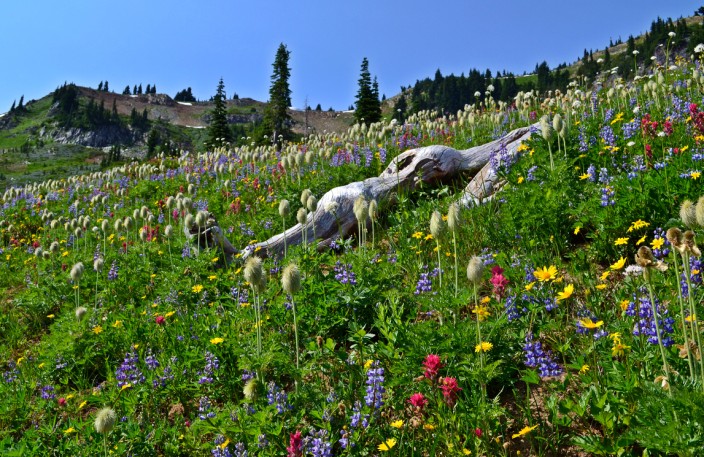
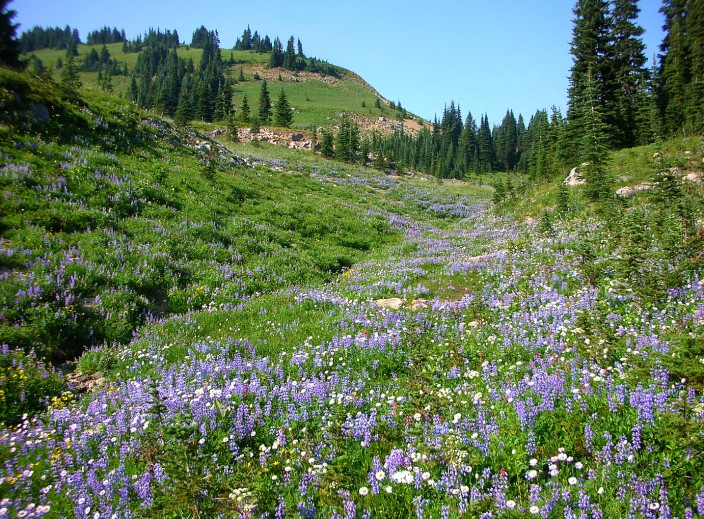
Thanks John for looking and commenting, it IS an amazing place.
That’s definitely amazing! The landscapes is so breath-taking. It looks like you knowledgeable all periods of the season when climbing there.
Thanks you Best for the kind comments.
An amazing place with such natural delights. I will surely plan my upcoming vacation to this place.Thanks for posting nice blog..
Hi Agness, yes I’m fortunate to live less than 90 minutes from this beautiful area so we go often for day hikes.
Thanks Joyce – the three shots together were a last minute light bulb going off in my head as I chose the photos to include.
That’s absolutely amazing! The scenery is so breath-taking. It looks like you experienced all seasons of the year when hiking there.
I loved the three snapshots of same view, different month! Gorgeous wildflowers.